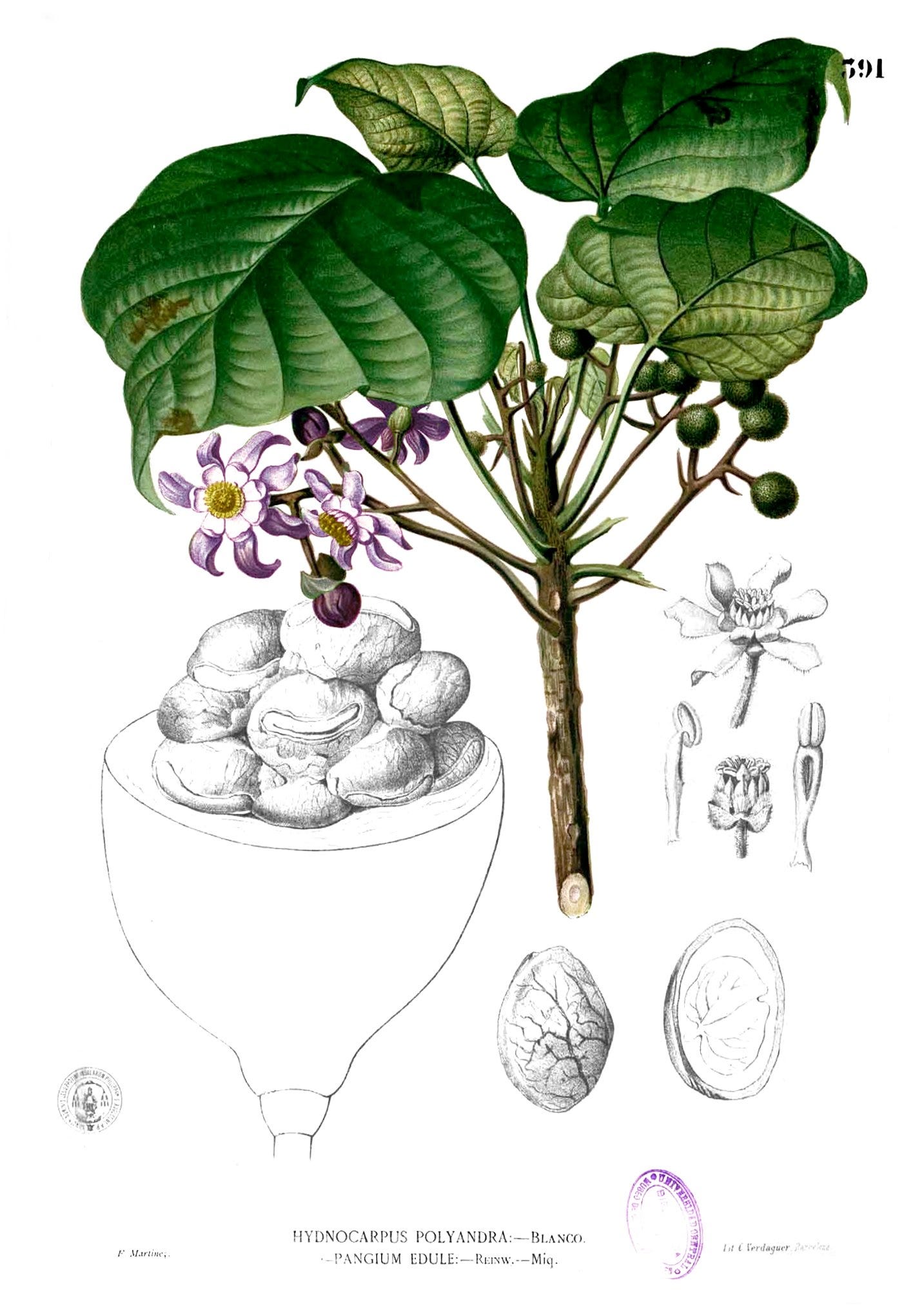Hullo to readers old and new!
I just got back to Cambridge after the best part of a month on the road – a travelogue of sorts will unfold over the coming weeks, once my body figures out what time it is again.
Below is this week’s entry in the Cambridge, MA Companion to Singaporean Food, a growing encyclopedia about all those words I italicize in essays, like lou bak, and rempah, and kopitiam. This series is primarily a benefit for paid subscribers, though I’ve left the first and second entries free to give a sense of what these are like.
If you’d like to have access to these, a month’s subscription costs less than coffee in a big city – and your subscriptions enable me to continue writing for you.
As always, comments and corrections are very welcome – I claim no special qualification for writing this other than a willingness to pursue harebrained schemes.
Buah keluak
Francisco Manuel Blanco (O.S.A.), Public domain, via Wikimedia Commons
The seed of the pangium edule, a tropical tree. The tree produces large, fleshy fruit containing multiple seeds, arranged much like cocoa in the pod. The seeds famously contain hydrogen cyanide when raw, which must be leached before they’re safe to eat (the hydrogen cyanide is actually distributed through every part of the tree).
Keep reading with a 7-day free trial
Subscribe to let them eat cake to keep reading this post and get 7 days of free access to the full post archives.



